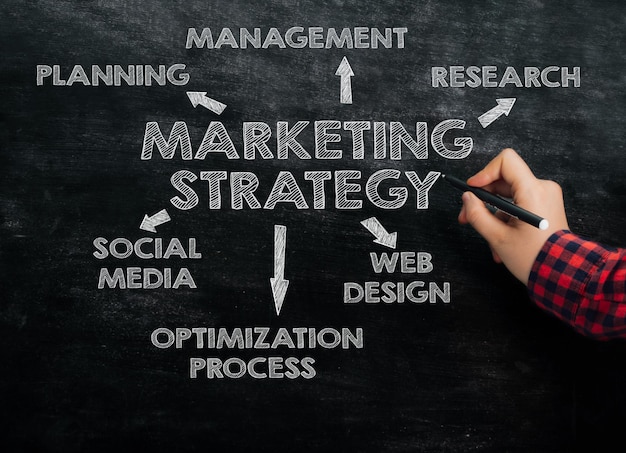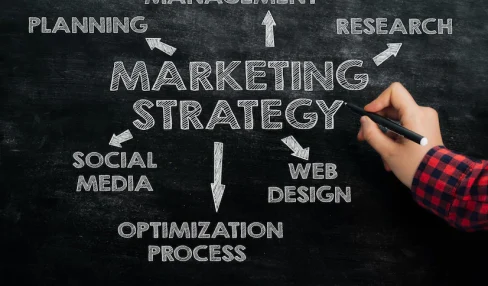Creating A Winning Marketing Plan: Steps, Tips, And Mistakes To Avoid
5 Mins Read
Published on: 08 September 2023
Last Updated on: 09 September 2023

toc impalement
A well-crafted marketing plan is the cornerstone of success. Whether you’ve been in business for a long time or are just launching your startup, understanding how to create a winning marketing plan can make all the difference in how well your brand is received and bought into. When you acknowledge that Minneapolis is one of the most diverse economies in the US, the stakes become higher.
So, let’s have a walkthrough and uncover everything you need to know to create a winning marketing plan. We’ll also look at common marketing mistakes businesses make that hamper their success.
The Importance Of A Solid Marketing Plan

Well, many business owners might think it’s enough just to craft good marketing copy and send it out. While this can bring in sales, it has to be part of a larger, well-defined framework. In order words, you need to have a strategy—a direction.
According to Small Business Trends, 80% of businesses that fail lack a well-defined marketing strategy. And companies with a documented marketing plan are 313% more likely to see positive ROI.
Clearly, having a strategic marketing plan is not something you want to leave out of your marketing process.
Step 1: Know Your Audience
The foundation of any successful marketing plan is to deeply understand your target audience. What drives them? What drives their buying decisions? What is their typical day like? What are their interests, pains, and desires?
Without this knowledge, you risk creating content and campaigns that miss the mark. And remember that Minneapolis is a diverse economy with various audiences. A Marketing Agency Minneapolis can be a great resource at this point, as they can help you connect with your ideal audience in a way that might be challenging for a startup entrepreneur. Whatever the case, here’s how to “know” your audience. To ensure you’re on the right track, do these steps:
- Market Research: Engage in researching the market trends extensively to uncover critical insights about your audience. This research should encompass their demographics, preferences, pain points, and behavioral patterns. Use surveys, social media analytics, and customer interviews to gather your data.
- Creating The Buyer Personas: Frame quite a detailed buyer personas representing various segments of the targeted audience. These personas must have served as guiding lights, shaping your content and messaging to be more relevant and engaging to your ideal customers.
Step 2: Set Clear Objectives
A marketing plan without clear objectives is like a ship without a compass; it’s easy to get lost. Your objectives should be SMART—Specific, Measurable, Achievable, Relevant, and Time-bound.
Here’s an example:
Objective: Increase website traffic by 25% in six months through content marketing and SEO.
Step 3: Developing A Comprehensive Strategy
Frame a strategy keeping the audience and objectives in mind. It’s time to build your marketing strategy. This should encompass elements like content, what channels you’ll use to publish content, and the messaging. Consider the following:
For the best results, create a content calendar that outlines the topics, formats, and publication dates for your content. Also, evaluate and identify the most suitable marketing channels for your audience. This may include social media, email marketing, content marketing, and pay-per-click advertising. You can use all or pick the best ones, as the case may be.
Step 4: Budget Allocation

If you spend too much money on the wrong marketing technique, you’re just going to get bankrupt real soon without making an impact. Because you won’t have enough money left to fund the areas that would have given you the most returns. Instead, allocate resources to different marketing activities based on their expected ROI. That means the highest investment should go into the most effective options.
Step 5: Implementation And Execution
With your strategy and budget in place, it’s time to put your plan into action. Assign responsibilities, set timelines, and ensure that everyone involved knows their role. This stage requires coordination and collaboration within your team or with external partners. Of course, if you’re a startup or small business with insufficient skill and team power, it’s wise to leave your marketing implementation in the hands of a marketing agency.
Step 6: Monitor, Measure, And Adapt
Your marketing plan is not set in stone. Actually, it should be a living document that you continually assess and adapt based on performance data. Use data analytic tools like Google Analytics, social media insights, and email marketing metrics to gauge the effectiveness of your campaigns.
Tips For Creating A Winning Marketing Plan
Now that we’ve covered the essential steps, let’s consider some tips to help you get the best results from your marketing plan:
1. Stay Current With Industry Trends
Marketing is an ever-evolving field. Stay updated with the latest trends, technologies, and consumer behaviors to keep your plan relevant.
2. Embrace Data-Driven Decision Making
Data is your best friend in marketing. Just as it tells you about your audience’s behavior and needs, use it to effectively refine your strategies and personalize content for them.
3. Foster Customer Engagement
Engage with your audience genuinely. Respond to comments, messages, and reviews promptly. A satisfied customer can become your most influential brand advocate.
4. Use Emotive Storytelling
There is power in storytelling. Customers connect with your brand on an emotional level when you tell them about your brand story, a customer success story, or anything they can relate to. Build emotional connection through heartfelt storytelling that causes your audience to envision themselves using that product or service.
Common Marketing Mistakes To Avoid
Did you know that only 80% of startups survive after the first year? That means only 20 out of 100 startups will continue standing after one year of launch. One reason for failure is poor marketing. So, while crafting your marketing plan, be mindful of these common pitfalls:
- Focusing Solely on Sales: A survey by Sprout Social found that 56% of social media users unfollow brands that post too many promotional messages. Don’t be like those brands.
- Neglecting Research: Failing to understand your audience or competition can lead to ineffective marketing efforts.
- Ignoring the Competition: Competitor analysis can reveal valuable insights and help you differentiate your brand effectively. It can also help you tap into what’s working for them.
- Not Adapting to Change: Markets are dynamic, and failing to adapt to changing trends and consumer behaviors can lead to stagnation or decline. For instance, not leveraging AI in your marketing now will only put you at a disadvantage.
- Neglecting Customer Feedback: Ignoring customer feedback and failing to address customer concerns can damage your reputation. Plus, you won’t improve your product or service.
- Inadequate Testing: A/B testing can lead to significant improvements. HubSpot reported that A/B testing led to a 166% increase in click-through rates.
Wrapping Up
If you can follow the steps outlined here and avoid the common mistakes, you’ll be well on your way to achieving marketing success. A well-executed marketing plan can be the difference between thriving in a competitive market and being left behind. So, invest the time and effort, and watch your business grow.
Read More:


















Comments Are Closed For This Article